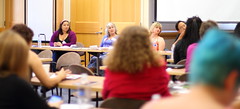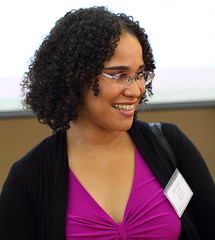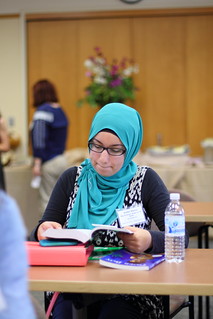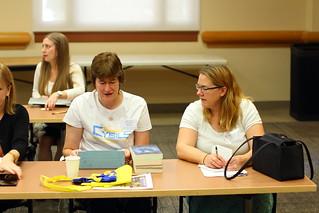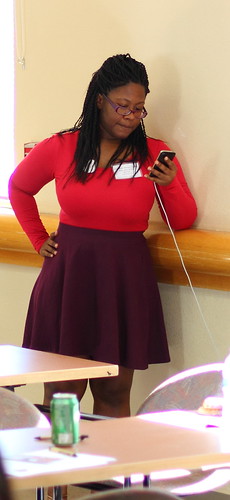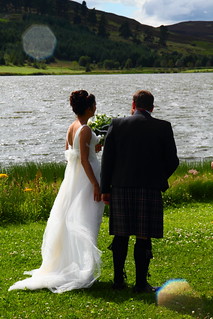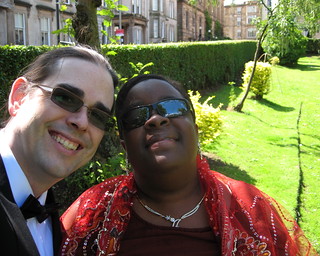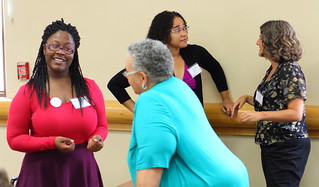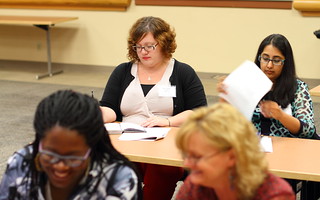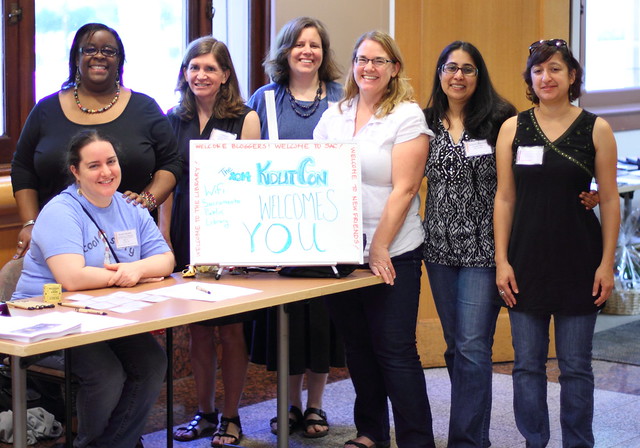
Somehow, though I've been reading along faithfully, I never got around to reviewing the second in the Gail Carriger Finishing School series. Curtsies & Conspiracies was just as much hare-brained fun as my well-loved Etiquette & Espionage. May I have so eloquently named a series someday! Love the use of ampersands in a title, and I love the font. Though this entry into the series is a little uneven for me, for fans, it will be eagerly received and lapped up.
Summary: Sophronia Temmick - still an entirely dreadful name - is now sixteen, and though further from the mutton-headed fourteen year old she was in the first book in this series, she's not much further in her second full year of finishing school. She's surreptitious and calculating, and can kill a grown man with a fan, but she still the sort who takes life as it comes, and goes along with things out of a sense of amused mischief, just to see what will happen next. Soph's education has expanded to knowing a great deal more about the perfect dress to catch attention - she wears black well - and quite a few new courses are on offer - including the rudiments of Seductions! Soph's new understanding of the world, now that she's a freshly turned sixteen, is expanding. There are things on the horizon which cause most girls to drop out of finishing schools - marriages, contracts with great houses, and gentlemen wanting to kiss her! Now her brother's getting married, and she's manufactured some tenuous excuse to take her roommate, Dimity, along with poor, put-upon Pillover, to be her guests at the betrothal ball. Before they can make their escape from the rather boring lessons, Something Awful happens to Sidheag... she's received a pigeon, which is strictly secret communication from Abroad... and the dispassionate girl they've come to rely on is utterly undone -- and then vanishes.
Which is simply unacceptable. There's nothing for it but to go after her, right? Fortunately - or unfortunately? - Soph already has her closest sidekicks along - whether she expects them or not - and the hijinks, fun, and danger roll along at a good clip.
Peaks: I like the series as a whole, and I like the covers - though I don't care so much for the girl on the cover (and maintain that the model has never actually looked fourteen or sixteen - not with that finished bone structure in her face), I always appreciate that the covers contain elements of the text, in this case the fan. I also laughed out loud - in public - at the idea of Sidheag getting a pigeon. Despite their history as carrier birds, pigeons, to me, are Just Not Serious Birds. Getting an Owl, oh, my, yes, that's a big deal...but in this reality, it's a pigeon (which, honestly? Makes more sense. Owls have their own agendas; pigeons just want you to give them more bread crusts, and if you keep feeding them? They'll come back. Owls... not if they see a fat vole). That little nod (or was it a razz?) to Harry Potter made me snort.
I was surprised by the fact that the girls are learning Seductions, but as spies, they know their own power as women and they're learning to use it in an educated manner. Dimity might faint, but I feel fairly sure that Agatha is going to rock this Seduction thing, once she figures out that she can't hide behind Sidheag anymore. I love the tiny hint of a love interest for our formerly quietest spy.

Creatively diverse characters in Carriger novels is something by now to be expected; we've seen the flawlessly beauteous Lord Akeldama and have admired his clothing sense and that of his drones, and then there's the sooties, and Soap. ...who is both adored, and somewhat problematic...
Valleys: While this is a ridiculous and fun series, and much loved, I want to practice engaging critically with the books I love, yes? That said, I've always had a tiny... question about some attitudes in these books, and I'm going to go ahead and put it out there. If it's a valley, it's a small valley. Maybe more a pothole? Okay, maybe not that small - it's something that bugs me.
First, I so LOATHE love triangles that the eruption of one in this novel really put me off, and tarnished what, for me, was a perfectly frothy and lighthearted book.
Second, I've always found Soph's relationship to Soap to be ...interesting. She followed him around, she came into his world, and she essentially made her interest in his life obvious - in a perfectly reasonable way. BUT. It seemed that the innocence was, in some ways, disingenuous; unlike Dimity, who is VERY CLEAR on who is and is not Acceptable, Sophornia seems to have missed that portion of her life - which I never really believed. She may not CARE, but surely she knows the social mores in her world - yes? Okay.
Sophronia and Phineas - or Soap's - proposed romantic connection, which began in the last book, feels ... on unequal footing, to say the least. Older boy Soap adores Sophronia; it takes her immature emotions longer to figure out that she might think he's okay, too, mainly because she's trying to keep fascinated someone Eminently Acceptable, that is, Lord Felix Mersey... except, how acceptable should the son of a Pickleman be to her? I had a hard time feeling like Soph would seriously be considering Felix, that has never felt realistic, considering what the Picklemen did and have been doing since the first book, and how arrogant and doltish he was - it almost seemed like one of those relationships your friends think you should have ("So-and-So LIKES YOU!"), but that you're ambivalent about, but go along with, once the "Do you like me Yes/No?" note gets passed, because everyone else thinks you're a cute couple. That Sophronia seems so guileless and so innocently curious in her actions toward both boys is realistic, but equally, she seems proprietary about Soap - and with the author not giving us sufficient background of human bondage in this semi-parallel Victoriana, or of Soap's position, legal or otherwise, in society, or reasons or explanation as to how it is that he's so exceptional - why is there only ONE person of color on an entire continent? - and how it is that he's always there for Sophronia... well, our Soap is somewhat Magical of a Negro, and always has been. Trying not to pass judgment, I've waited a long time for him to have a fuller storyline, and maybe now ... there's a chance. The open-ended conclusion to the novel may frustrate some, but I'm interested to see if the "solution" provided for the storyline is going to make an actual difference in the social and class separations to which even this version of Victorian England seems to cling.
What follows is a dissection of a specific detail in the novel, which may contain SPOILERS despite the fact that this doesn't go into plot, but a minor action. Read at your own risk.
Third, and this is a big deal for me - in this novel, Sophronia, without thinking too much about it, touches Soap's hair, thinking to herself how much she likes the texture, and -- I'm sorry. I know, all right? It's a novel, and she's sixteen, and curious, and it's innocent and he's not a stranger, but...
... someone touching an African British character's hair without invitation? And she, being a girl of Quality, and of the dominant culture? Granted, he does not have our modern-day issues and hangups, but without context or explanation or exchange on this action? With just a knee-jerk reaction of shame at being seen taking this liberty, by someone else of the dominant culture? No. NO.
Sorry, but there it is - it briefly gave me goosebumps, and not the nice kind. The moment is a mishmash of innocent and egregious, especially since in Actual Britain during Actual Victorian times, Africans were exhibited like zoo animals. The fascination with African hair and skin and body type is well documented; further, in many Western countries, as well as in the Southern United States for too many years, it was believed good luck to rub the head of a person of color - ! so a hand on the head/in the hair is greatly contested ground - deeply, conflicting, greatly contested, and upsetting ground. Despite her allegedly continental upbringing and subsequent worldwide gallivanting, I cannot imagine that the author did not know that, thus I must assume she wrote that scene in that manner on purpose.
However, I'm not at all sure that it accomplished all that she hoped.
How much of our real world sensibility overlaps into the steampunk world? Other than all the words for clothing and such being the same, other than the class structures being the same as real life Britain - I mean, it's apparent that Soap doesn't measure up to Felix for one great big right-on-his-skin reason, not to mention the fact that he works, when real gentlemen don't sully their hands with trade - everything is different. Sort of. How much are we meant to say, "Ah, well, it's fantasy/alternate history?" I don't know - but I think maybe not that much.
It doesn't diminish from my desire to read the final book and see this series conclude triumphantly, with Soph "finishing," in whatever way she feels is... um, done. But... this still is a tiny bit of a niggle that threw me out of the story, and makes me wonder a bit.
Conclusion: Due to considerations of growing up, this volume of the Finishing School tales is a little heavier than the usual frothy fun, as Reality looms on the horizon, but there's still lots of laughs, a tiny surprise, a great deal of speculation and at least one more book in the series, which fans of the series will enjoy.
I received my copy of this book courtesy of the publisher. After November 4th, you can find WAISTCOATS & WEAPONRY by Gail Carriger at an online e-tailer, or at a real life, independent bookstore near you!





